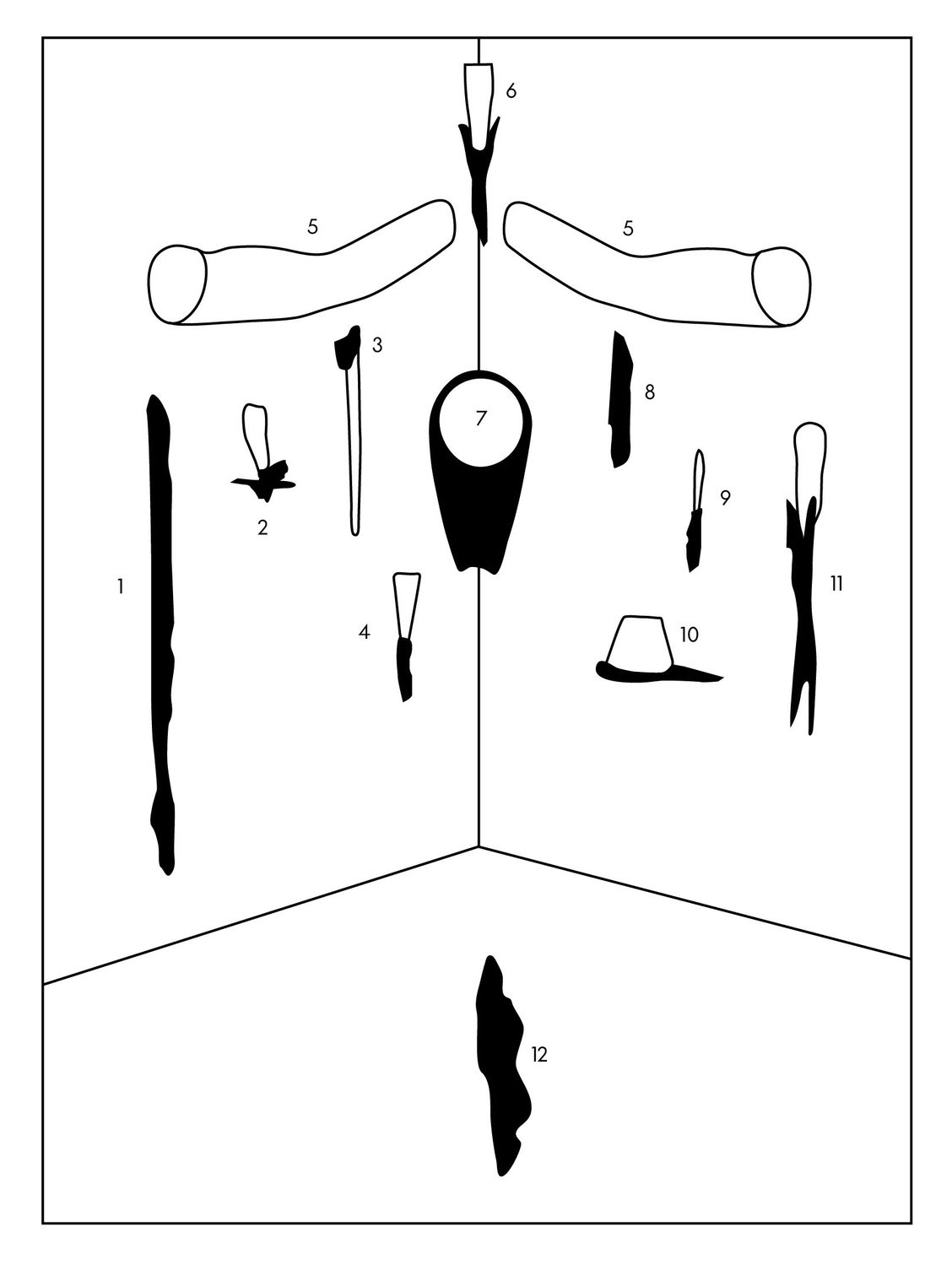-
Author
Paula Conroy -
Date
6 Oct 2022
Essay
Neke Moa: Te Papakāinga ō Papaīra
Pūrākau
Neke Moa works in collaboration with materials gathered from te taiao to tell pūrākau (timeless stories) of the atua (deities) who shape te ao Māori, the pieces channel connections between atua, tohunga, and tāngata offering us guidance and protection in our daily lives. She works closely with her partner, a tohunga from Taranaki, together they gather, collect, research, interpret and write the Atua stories.
1. Haumietiketike
Haumietiketike is a creation of Papatūānuku and Ranginui, and is one of the younger siblings in this whānau. As he was growing and learning his passions, and before he was commited to his mahi pūkenga, he travelled. Haumie decides to join te Papakainga o Papaīra because he enjoys the freedom within Papaīra’s tikanga, and the other Atua. He becomes a senior member of the Papakainga, creating his own whare within it with his whānau: Rongowhakata, their creation Kahutiaterangi, and his whāngai, Ruru. Together, this group are responsible for the growing of plants, trees, and soils, and are strongly affiliated with rōngoa, tohunga, and wharepora work.
2. Kokoputūriripi, Tuiletu and the Tohunga
Kokoputūriripi is the daughter of Tāwhirimātea and Laufiso, and the partner of Papaīra. During her time in the Papakainga she has had many roles. She is reponsible for the bringing in many of the whāngai, and helps these Atua find and hone their talents. The primary parent of Tuiletu is Laufiso. During the time of Tui, Tāwhirimātea has a habit of treating Laufiso and Kokoputūriripi badly. Tuiletu decides to take the whare of Tāwhirimātea for his own, waging war on Tāwhirimātea with the support of Laufiso, Papaīra and many of the other atua houses. He is defeated, encased within a comet and exhiled. The Whare a Tāwhirimātea is now headed by one mokopuna. There are tohunga lines in Taranaki who have wairua relationships with Atua, of which Tāwhirimātea is one. This is how these stories have been experienced, collected and told over time. These stories have been shared in this series.
3. Ranginui
In the beginning, the creation sisters did not have enough energy to realise the potential that would eventually become Ranginui, so they put him aside to focus on creating Kahuika. Left alone Ranginui continued to develop slowly, watched over by Papaīra — the start of an enduring friendship. Papaīra brought Ranginui to her sisters, where Ranginui and Papatūānuku fell in love. Together they created many of the first line of Atua. However, while Papatūānuku loved creating new Atua, her care for them stopped soon after their birth. Ranginui began to feel that they should slow the creation of Atua and focus instead on the parenting of the ones that they had — and this disagreement was the start of a breakdown in their relationship. At the same time, Ranginui and Papaīra were discussing the potential that the Atua could have if they were actively and purposely parented. At the end of the relationship with Papatūānuku, Papaīra and Ranginui decided to create an Atua together and focus their attention on its development — resulting in the creation of Hine Mātauranga.
4. Waireremo
Waireremo is the eldest child of Laufiso and Tāwhirimātea. When she is created, they agree that Tāwhirimātea will be the primary parent, but he abandons her on a mountain and returns to Laufiso. Waireremo is left to bring herself up alone. Waireremo is also the sister of Kokaputūriripi, who finds Waireremo, and brings her to the Papakainga to be brought up under the care of Papaīra. Waireremo is very angry and aggressive when she arrives at the Papakainga, but Papaīra demonstrates patience and it is Papaīra who reintroduces Waireremo to her mother Laufiso. Papaīra helps Waireremo tame her rage, channel her gifts, and become a tuakana member of her Kainga.
5. Kupenga – Whānau Mārama
The whānau mārama are a group of stars gifted to Papaīra from her sister Koauika. Koauika gave these small stars to mark the territorial space of the Papakainga. These celestial markings are hidden maps between Atua whare and creator portals. Koauika created these as a mihi to Papaīra for taking so many Atua into her whare to be cared for. A lit pathway guides them back to Papaīra their Matuawhaea.
6. Papaīra
Papaīra, one of the creation sisters, welcomed many children into her papakāinga, where they learned from her and sharpened their own qualities and skills. Here, Papaīra looks out over some of these atua, the tuākana (eldest children of the papakainga), Hine Matauranga, Tūwhare, Tūmengataha, Tūmateaha, Rūaumoko, Te whare o Tūmatauenga (13 Tū sisters), Raromia, Waiereremo, Hine Tītama, Haumie Tiketike, Kokoputūriripi (partner) and Ranginui (Matua). Gathering them together within her papakainga, Papaīra stretches out her kupenga whetū (net of stars) representing the whānau mārama — the vast universe of atua and celestial beings she helped create and nurture. Papaīra is known for her adventurous and curious spirit, for pushing to the edges of the known universe and beyond and taking an interest in what she comes across. For Neke, gathering materials at the beaches and bush around Ōtaki, Papaīra encourages us to look closely and look again.
7. Te whare Tū: Tūwhariki, Tūmengataha, Tūmateaha, Tūongi, Tūpō, Tūrā, Tūrongo, Tūkēmateora, Tūpatairapu, Tūwhiore, Tūwhatu, Tūwheke, Tūwaewae
Created from Ranginui and Papatūānuku, the Tū are a collection of whāngai collected by Papaīra. They share the common trait of curiosity, pushing their learning past the level of most Atua. The Tū were brought to Papaīra because her sisters believed that because she is infinitely curious, she would be the best one to guide them. Papaīra pushed them to discover new ways of doing things and new ways of utilising resources. This further isolated the Tū from the other Atua, who began attacking them to stop their continuous discovery. Seeing this, Papaīra decided that the Tū should learn to fight as a group and they developed shared communication with each other, a hive mentality. Taking this a step further, the Tū created a shared identity, manipulating their appearance to resemble each other and imitating each other’s movements. This confused the Atua who found it difficult to tell them apart, and they increased their attacks on the Tū in an attempt to bring them in line with their ideas of what acceptable behaviour was. Realising that between them they had a wealth of knowledge about the other Atua, the Tū attacked the major Atua houses, disguising themselves as other Atua, forcing the attention of the Atua that were previously attacking them onto each other. This collective is commonly known as Tūmātauenga.
8. Hine Mātauranga
Created by Papaīra and Ranginui, Hine Mātauranga trained
in everything Papaīra and Rangi had knowledge of, expanded all interests, and travelled beyond comfortable boundaries. Suspecting Hine Mātauranga of sleeping with her lover, Papaīra punishes her by reducing her size and therefore her power. Hine Mātauranga avoids this fate by spliting into many small parts, so as not to be easily seen, at the same time spreading her power over a much larger area. Hine Mātauranga becomes the Atua of Patupairehe, Hine Mātauranga ō nga mea maroiti katoa ō te aō — adapting small versions of herself to become known as small helpful beings across all cultures. She carries many names and developed knots for various uses like nets for fishing.
9. Rarōmia
Rarōmia was brought to the kainga by Kokaputūriripi, the lover of Papaīra. Originally a daughter of the wind, Kokaptūriripi becomes reformatted as a lizard when she moves in with Papaīra. Kokaputūriripi has free range and is a regular visitor to other Atua when Papaīra is away from their whare. During one such visit to Rūaumoko, Kokaputūriripi is noticed by Rarōmia, who has a love for reptiles. Captivated, Rarōmia follows Kokaputūriripi home at the end of the visit and refuses to leave her side. When Papaīra returns, she does not like the situation, but Kokaputūriripi explains Rarōmia’s fascination with reptiles including herself. Papaīra believes this to be true and decides to create a space for Rarōmia to indulge in her passion for lizards.
10. Hine Titama
Hine Titama is an example of the strength required to undertake person growth and change, and her journey is an extension of a story many in New Zealand are familiar with. Leaving Tane Mahuta is a hard and dangerous journey for her. Tane Mahuta is reluctant to allow her to leave, and his response is one of violence, and rage. Hine Titama reacts to this by creating her own whare, below the ground within the papakainga of Papatūānuku and Tane Mahuta. It is at this boundry that she meets the Atua who make up the Whare Tū, who practice sparing everyday outside of her whare. On one occasion while she is watching, she meets Papaīra, who eventually invites Hine Titama to join her Papakainga so she can have some peace and quiet. The front door of the whare of Hine Titama, where wairua enter, is carved by Papaīra and the Whare Tū. The whare crosses the boundaries of the Papakainga of Papaīra, Tane Mahuta, and Papatūānuku. Hine Titama becomes part of the whānau of Papaīra.
11. Tuakana Tū
Tūwhāriki along with the twins Tūmateaha and Tūmengataha are the most senior tuakana of the sisters that are collectively known as Tūmatauenga. They all were trained by Paipaīra and her daughter Hinemātauranga, who helped them develop their natural curiosities. Tūwhariki is charged with all the responsibilities that come with being the oldest. She oversees the comings and goings of the Atua, if called upon to make a decision, her word is law. The twins lead the charge into the unknown, identifying need for change, meeting the challenges this brings and committing to the outcomes.
12. Rūaumoko
Upon the separation from Ranginui, Papatūānuku — the ultimate creator of Atua — held on to their child Rūaumoko, in a bid to have his potential never leave her body. Rūaumoko rolled and heaved within her, craving the freedom of space. The more he writhed, the tighter Papatūānuku held him. Eventually Rūaumoko stopped moving. Papatūānuku, thinking he had died, became sick with sadness and began to fade. Seeing this, Papaīra convinced her sister to give up the child, for the health of her and her other children. Together the sisters drew the body of Rūaumoko from Papatūānuku. As Papaīra took the body away, wrapped in its whenua, still warm, it held potential. She decided to bury it deep within the dark, warmth of her kainga. Here, Rūaumoko healed and completed his development. His afterbirth rotted around him and turned into lava, reminding him of this mother’s womb. Rūamoko decided to stay in this place, it was comfortable, like his mother’s womb and allowed him the freedom of space he craved.
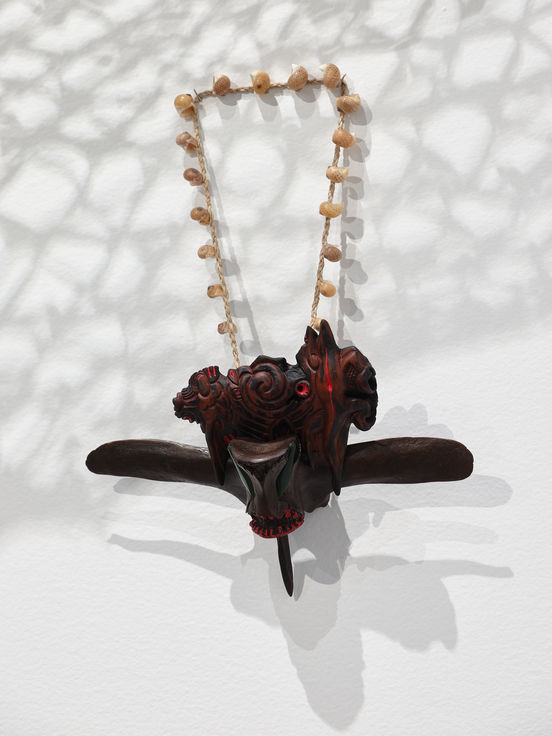
Neke Moa, Kokoputūriripi, Tuiletu and the Tohunga, 2022
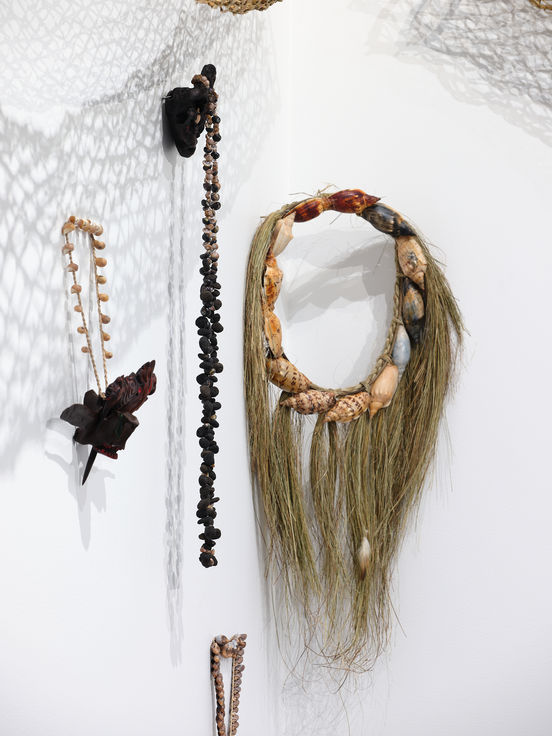
Neke Moa, Te whare Tū and Tūwhariki, Tūmengataha, Tūmateaha, Tūongi, Tūpō, Tūrā, Tūrongo, Tūkēmateora, Tūpatairapu, Tūwhiore, Tūwhatu, Tūwheke, Tūwaewae, 2022
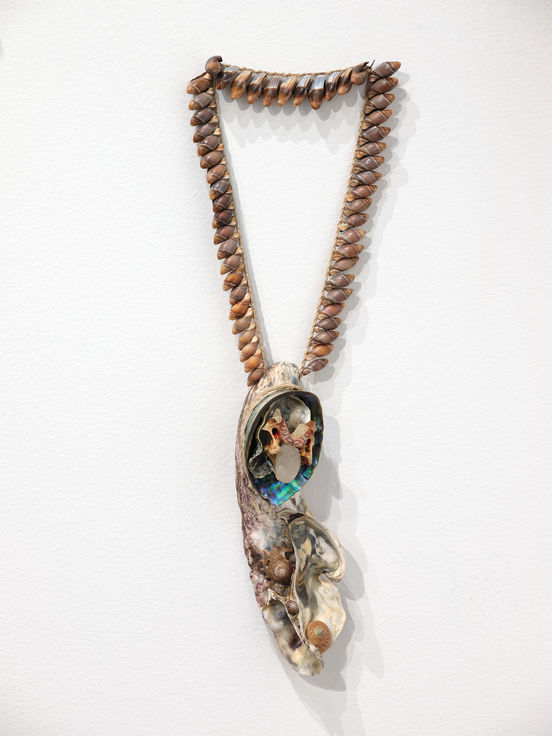
Neke Moa, Waireremo, 2022
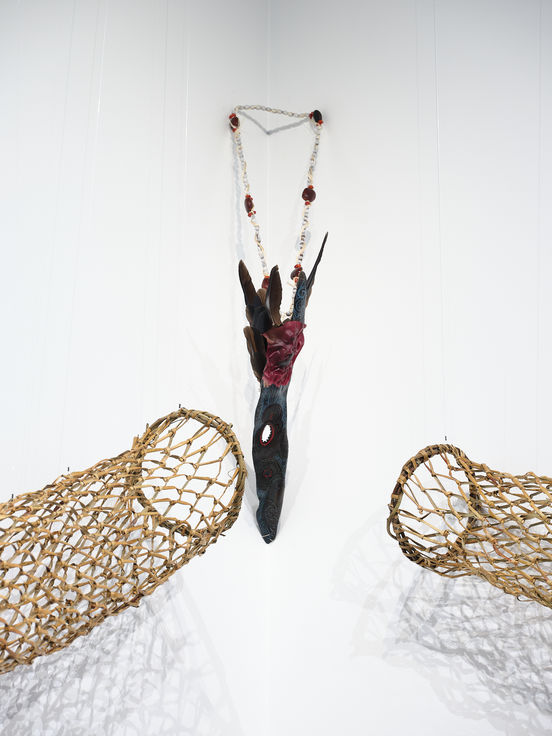
Neke Moa, Ngā Kupenga and Papaīra, 2022
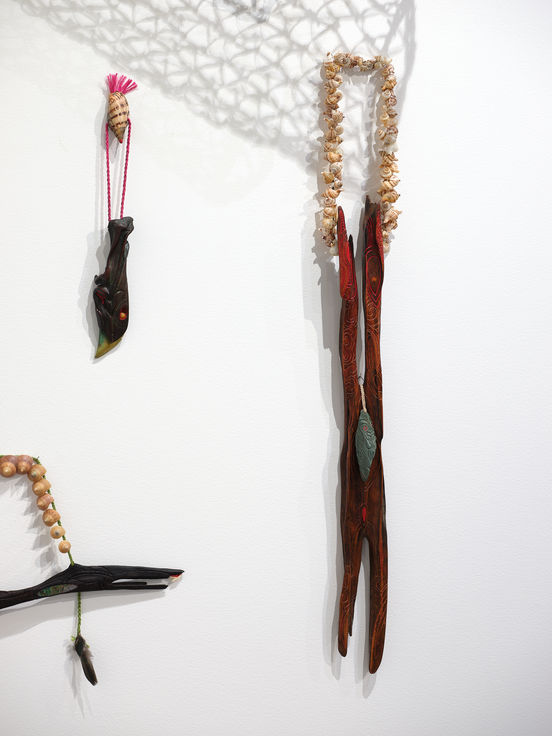
Neke Moa, Tūakana Tū, Tūwhariki, Tūmengataha, Tūmateaha, Hine Titama and Rarōmia, 2022
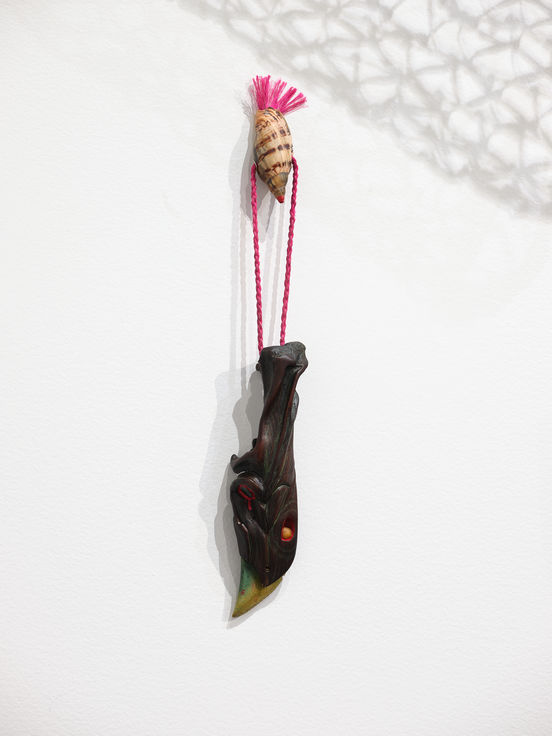
Neke Moa, Rarōmia, 2022
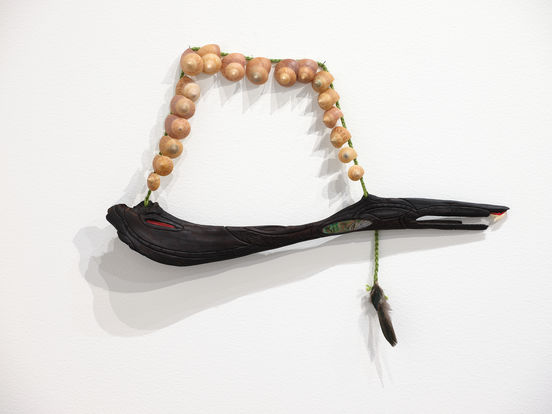
Neke Moa, Hine Titama, 2022
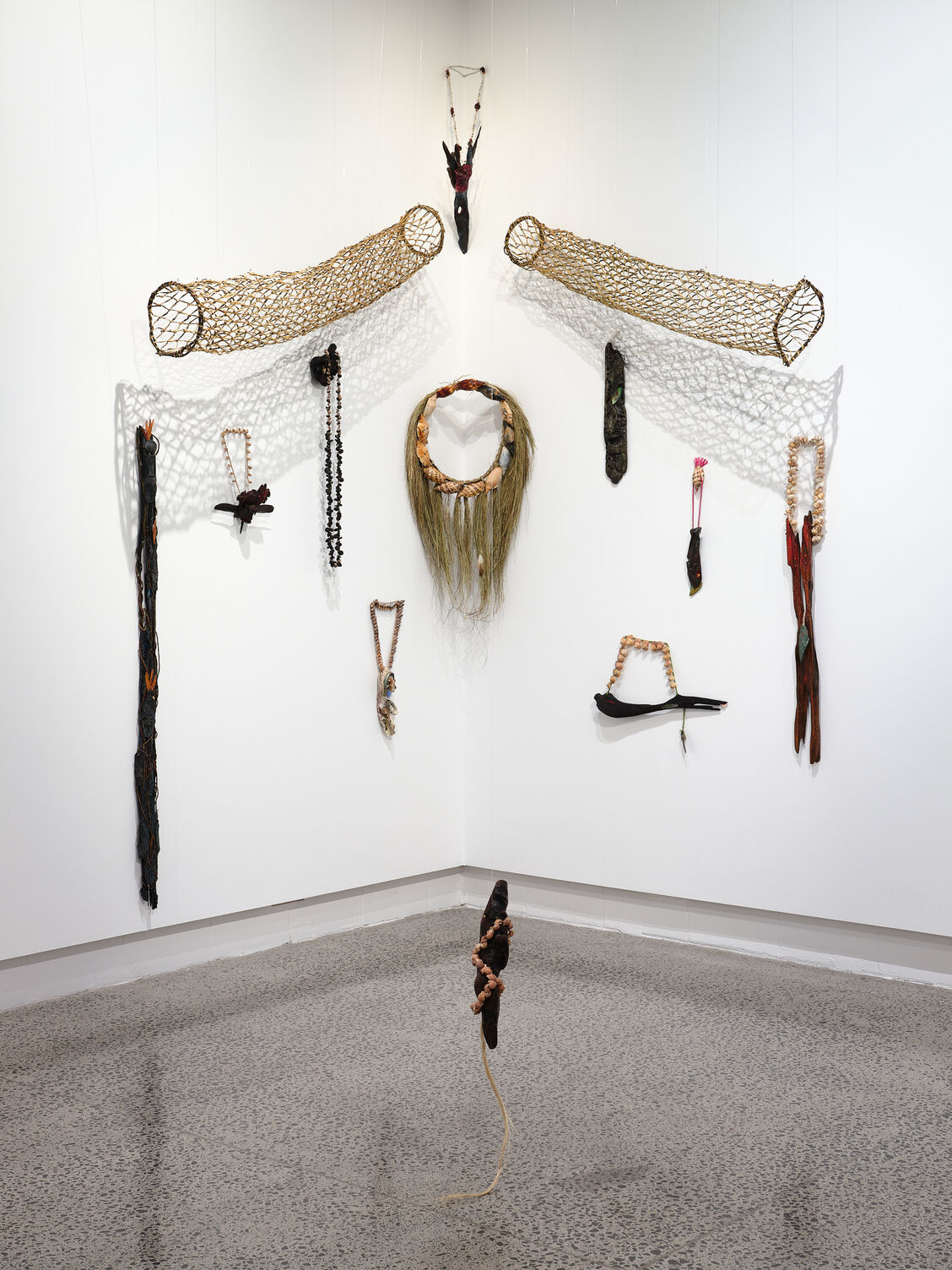
Neke Moa, Te Papakāinga ō Papaīra, 2022. Photographs by Sam Hartnett.
